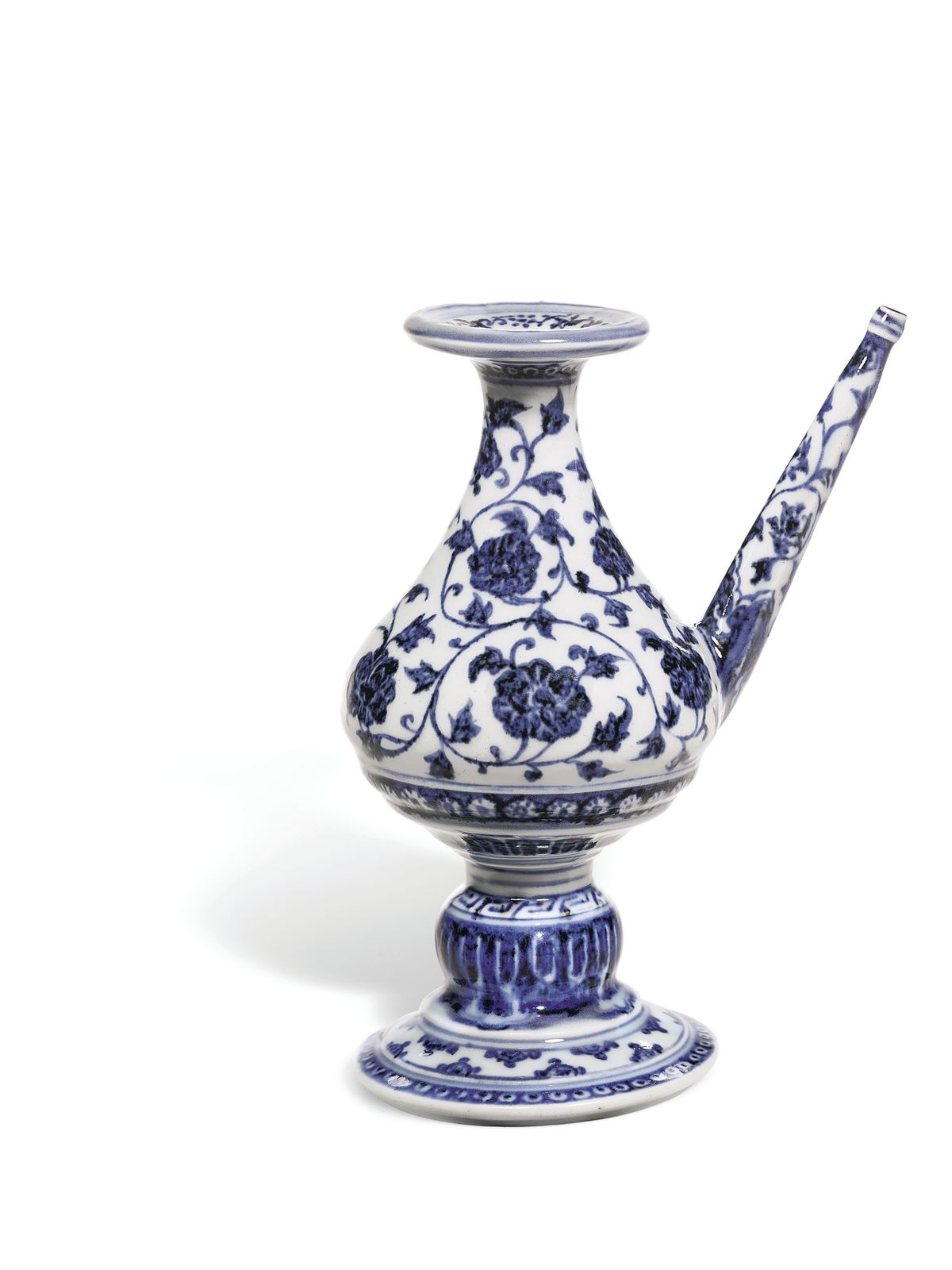Sotheby’s is preparing to sell a collection of Chinese porcelain amassed by Roger Pilkington, one of the greatest left in private hands. A Wiltshire farmer, he came from the family who owned the Pilkington glass company in the north of England. He collected Chinese ceramics from 1958 up until his death in 1969, when they passed to his family.
The collection was given conditional exemption from inheritance tax, and around 100 items need to be offered privately to UK public collections before the Sotheby’s sale takes place on 6 April in Hong Kong.
The star items in the auction are all 15th-century blue-and-white porcelain: a palace bowl (est £4m-£6m), a ritual holy water vessel (est £3m-£4m) and a moonflask (est £2m-£3m). Pieces range across a period of 1,000 years, from the Tang to the Qing dynasties, and have been given a total estimate of £20m.
Surprisingly, the guide price for UK museums for the top three items is £17m, significantly above Sotheby’s £9m to £13m estimate. It is possible that Sotheby’s lower estimates are to tempt potential buyers to bid. The main market for fine Chinese ceramics is now Hong Kong, mainland China, Taiwan and Japan.
Some items from the collection, which would fill gaps in UK museums, are not in the auction and are likely to be offered in lieu of tax later this year.


